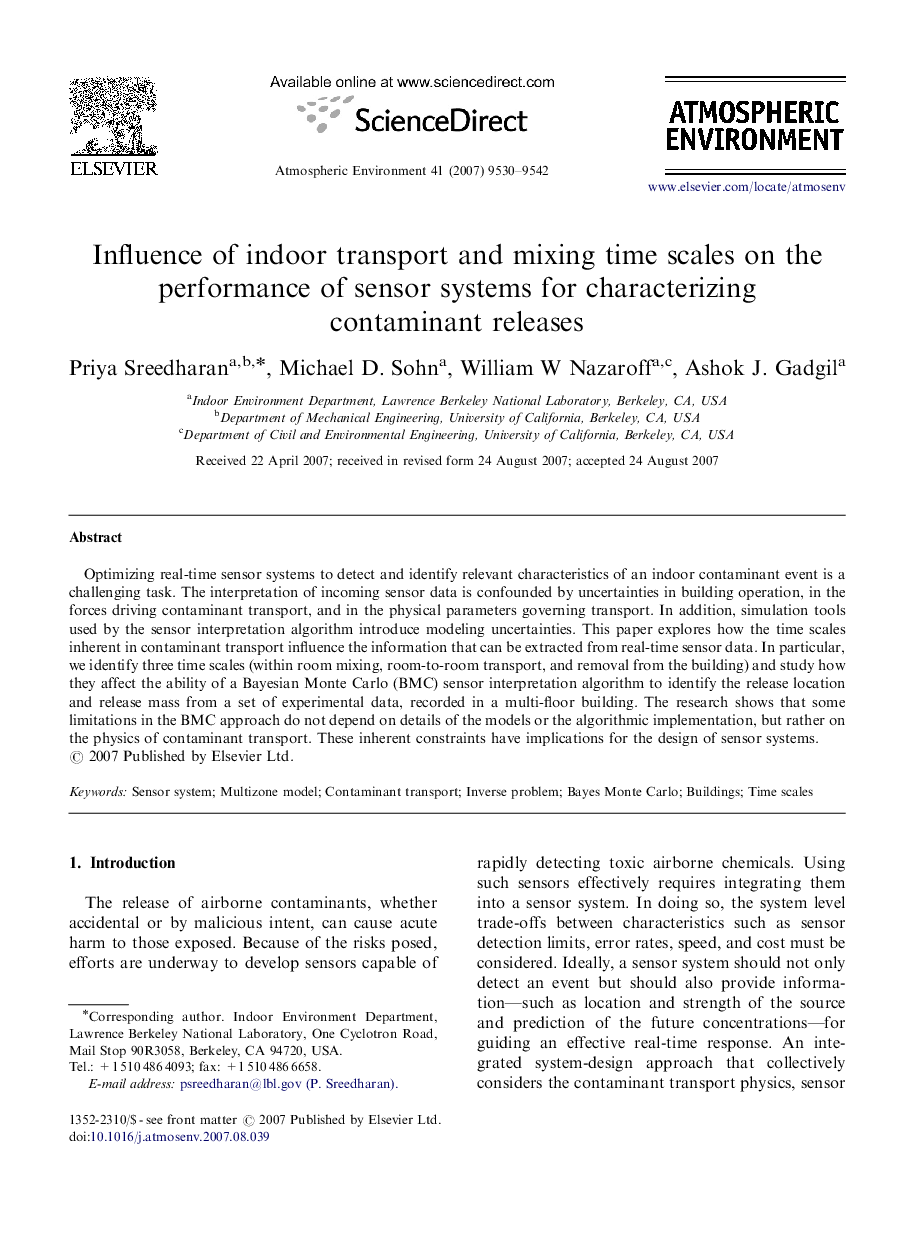| Article ID | Journal | Published Year | Pages | File Type |
|---|---|---|---|---|
| 4442888 | Atmospheric Environment | 2007 | 13 Pages |
Optimizing real-time sensor systems to detect and identify relevant characteristics of an indoor contaminant event is a challenging task. The interpretation of incoming sensor data is confounded by uncertainties in building operation, in the forces driving contaminant transport, and in the physical parameters governing transport. In addition, simulation tools used by the sensor interpretation algorithm introduce modeling uncertainties. This paper explores how the time scales inherent in contaminant transport influence the information that can be extracted from real-time sensor data. In particular, we identify three time scales (within room mixing, room-to-room transport, and removal from the building) and study how they affect the ability of a Bayesian Monte Carlo (BMC) sensor interpretation algorithm to identify the release location and release mass from a set of experimental data, recorded in a multi-floor building. The research shows that some limitations in the BMC approach do not depend on details of the models or the algorithmic implementation, but rather on the physics of contaminant transport. These inherent constraints have implications for the design of sensor systems.
